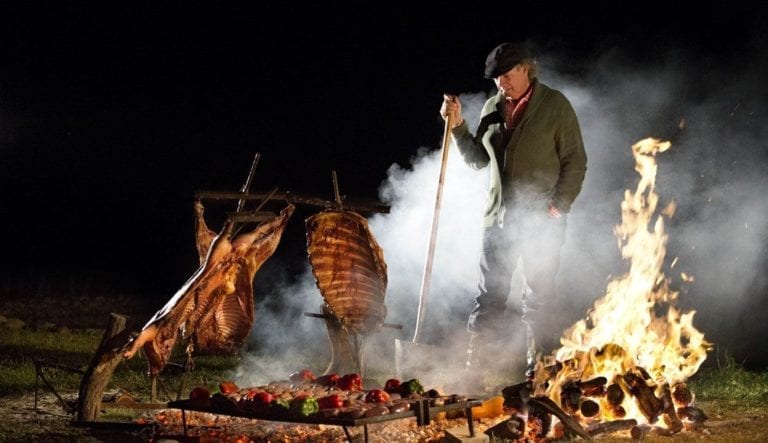Everything you need to know about Argentinian Asados
Asados. Why do you keep hearing this word thrown about day in day out during your stay in Buenos Aires? Well, here’s why. If you ask any local Argentinian no matter how old they will all tell you the same thing: Argentina is world-famous for its asados. For those of you that are completely baffled when you hear the word, which you will A LOT, I will help you out. An asado can sort of be compared to what we know as a ‘Barbecue’ in Europe and the states… however, it is so much more than just a Barbecue. Although I’ve just made this comparison you will make enemies very quickly if you compare Argentinian’s sacred asado to a BBQ. They’ve got a point, an asado is cooking in its purest minimalistic form – just a grill, fire and meat not a gas-fuelled fast-food mimic. It is also a social event with utmost importance, and you’re about to find out why.
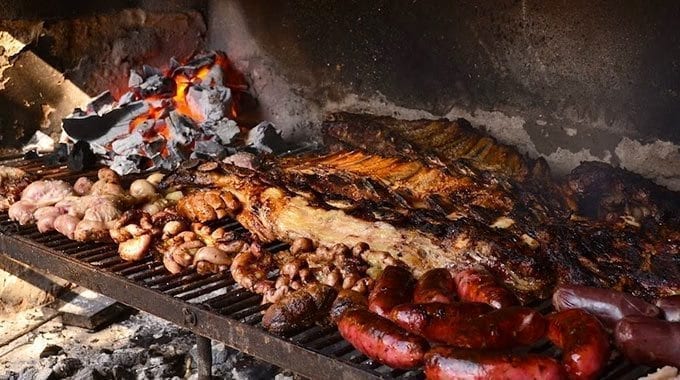

For a lot of Argentinians, the ritual gathering is just as if not more important than the food itself. In most families, they have one once a week (normally on a Sunday) where the entire family gathers at the ‘head of the family’s’ house. If you haven’t already figured, everything in this country is late because the Argentinians don’t like to rush so they take their time to cook and prepare the food and more importantly to enjoy each other’s company.
The history of the asado
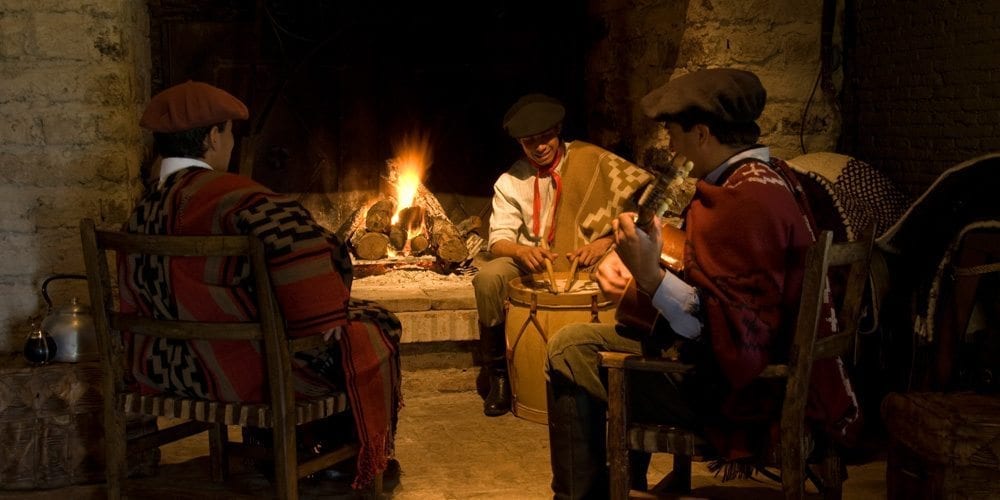

Until the middle of the 1800’s huge herds of wild cattle would roam around the pampa region of Argentina. The pampas are the area of fertile South American soil including the provinces of Buenos Aires. The people of Río de la Plata, especially the gauchos, developed a real love and passion for beef, in particular ‘asado’ which is beef roasted. If you don’t know what a gaucho is they are the travelling and colourful horsemen who lived on the pampas from mid-18th to the 19th century and are folk heroes similar to cowboys in Northern America. The Gauchos would roast the beef very close to a slow-burning fire on a skewered metal structure called an ‘asador’. The gauchos also used wood from the quebracho tree to cook the meat because it didn’t produce a lot of smoke and gives the meat a rich flavour. This formed the basis of the gaucho diet, accompanied with some maté tea. So this is why they are so important to Argentinians because they have a whole history behind them.
How to cook an asado 🍖
The person that starts the asado is known as the asador and he or she starts by lighting the stack of wood, which sits on top of a heap of charcoal on the left-hand side of your parilla (a cast-iron grill which can be adjusted at different heights). If you’re having difficulty getting the fire to light chuck in a few pine cones. Once your grill has warmed up, scrub it down with some newspaper to give it a big old clean. When your flames have calmed down you should have a pile of glowing charcoal on the left of your grill which you can spread across evenly to the right-hand side. Take the grill down to roughly 15cm above the smouldering embers. Then add you cuts of meat starting with the biggest cuts first. Don’t marinade the meat, simply rub in a bit of salt. Keep the hottest coal aside so you don’t have fat dripping and big flares of smoke. The temperature is right when you hear a gentle but constant sizzling. It normally takes about 2 hours to cook an asado so don’t worry about overcooking the meat, locals have it medium to well-done. Now sit back and enjoy a glass of Malbec whilst your meat is cooking because fiddling with the meat is in fact frowned upon! If you’re peckish you can also serve a few picadas (snacks) of cheese, ham, salami and olives. Learn more about Common Cuts
Remember: Low and Slow!
El MEJOR ASADO ARGENTINO Posted by Samuel and Audrey on Wednesday, December 25, 2019
Credit Samuel and Audrey
HELP! What cuts of meat should I buy?
Here is a shopping list of meats that you can buy. Allow for roughly 500g of meat per person but the more the better! If you’ve cooked too much you can always eat the leftovers in a sandwich for lunch the next day.
Tira de asado – always the favourite
Vacio – a flank steak
Bife ancho – rib-eye steak
Lomo – tenderloin
Is it just steak?
Learn about the Asado al Asador Gaucho Style
The answer is no! An asado has many other components than just steak so if you can’t hack all the red meat don’t fret, there are plenty of other choices. If you’re going all out with entradas (starters) you can add achuras which is offal. For starters, you can cook mollejas (sweetbreads) on the parilla until they are crispy served with a generous squeeze of fresh lemon. Normally these are the only achuras served but sometimes you can also have chinchulines with them (intestines) and riñones (kidneys).
Now for the chorizo, morcilla (like black pudding) and provoleta (sort of like an Argy cross between camembert and halloumi) which you add last but eat first. Once these are all cooked you cut them up into small pieces and eat them on slices of baguette.
Hopefully, once your meat is cooked your sous-chefs will have brought out an array of salads. Although carnivorous Argentines probably don’t stick to the 5-a-day guideline with all that meat salads are a perfect accompaniment to balance out the rich foods especially if there are veggies about.
Recommend: An “ensalada criolla” which is tomato, lettuce and onion with an olive oil and white wine dressing which cuts through the richness of the meat impeccably.
We also recommend putting some veggies on the grill once your meat is cooking. Try onions in halves, red pepper in halves (even yummier with a cracked egg sitting in them), aubergine, courgette, tomato, corn on the cob and sweet potato – you name it really, whack on whatever takes your fancy. For a rick charcoal taste, you can even pop these in with the coals under the parilla.
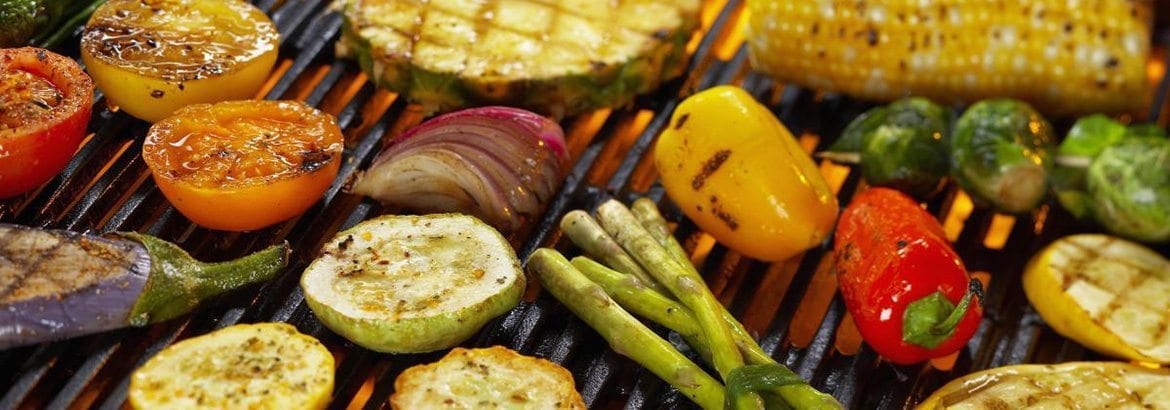

Did someone say sauce? Argentinians are much more sophisticated than us Western folk. They don’t smother their meats in mayonnaise, ketchup or worse burger sauce. They a herb-based condiment known as chimichurri made from dried oregano. You can buy it already made or you can even make it yourself by adding some olive oil, chilli and garlic for a bit of a kick. And/or salsa works perfectly (salsa criolla) made from red pepper, tomato, onion, parsley oil and vinegar.
Argentines don’t really do plates and cutlery at asados. It’s all served as finger-food on big chopping boards.
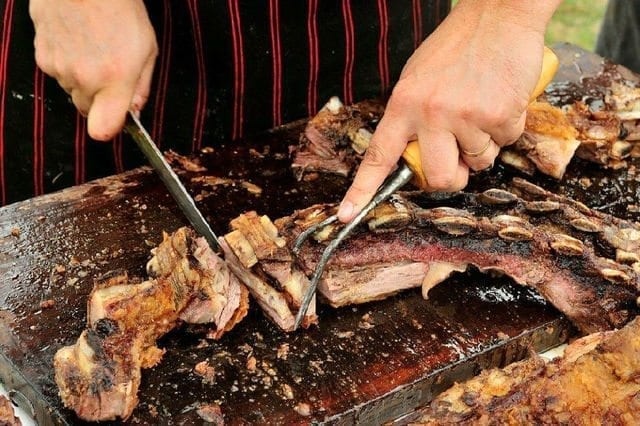

If you’ve followed this correctly you should be tucking into the succulent meat with heavily red-stained Malbec lips at around midnight. Now you know, come to Argentina, Study Spanish and discover its magnificent food.
Tip: Serve the meat in order that it’s ready.
Make sure you have a round of applause for the asador because he/she has earned it!
Fun Fact:
The average Argentine eats a whopping 60kg of meat per year!





